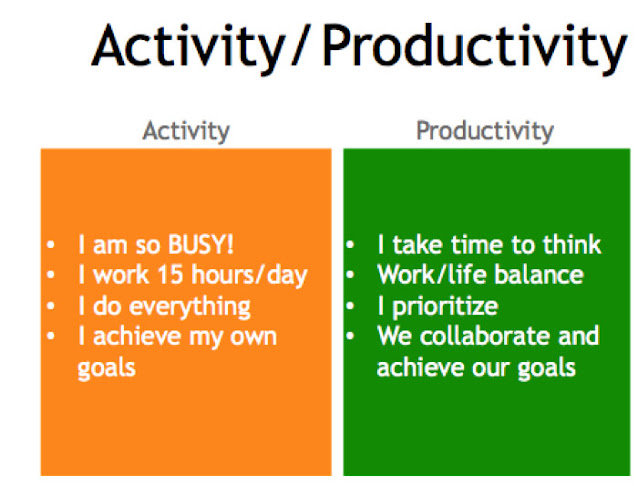Are You Measuring Activity in the Name of Productivity?
Introduction:
In today's fast-paced world, the pursuit of productivity has become an obsession for individuals and organizations alike. We often measure our productivity by counting the number of tasks completed, the lines of code written, the hours spent at work, or other quantifiable metrics. However, this begs the question: are these metrics truly indicative of productivity, or are we simply measuring activity in its name?
The Pitfall of Code Check-Ins:
One common example of this dilemma can be found in the world of software development. Many software teams measure productivity by tracking the number of code check-ins to a repository. While this metric might seem like a reasonable indicator of progress, it can often lead to misleading conclusions.
Consider this scenario: Developer A consistently checks in code several times a day, making minor changes and corrections, while Developer B works for days without checking in code until a major feature is completed (it is not a good practice though). The raw number of check-ins would suggest that Developer A is more productive. However, it fails to account for the complexity of the work being done or the quality of the code produced. In this case, Developer B might be delivering more valuable and functional code, but their activity is not reflected in the simplistic metric of check-ins. I have experienced developers checking in a line of comment and removing that several times in a day.
Lines of Code (LOC) and KLOC:
Another commonly misused metric in software development is the number of lines of code (LOC) or thousands of lines of code (KLOC) written. The assumption here is that more lines of code mean more productivity. However, this metric can be deceptive. Writing excessive lines of code can lead to code bloat and increased maintenance efforts. On the other hand, efficient, concise, and well-documented code may require fewer lines but offer greater value and maintainability.
Number of Features Delivered:
In project management and product development, measuring productivity by the number of features delivered can also be problematic. The focus on quantity over quality may lead to rushed, half-baked features that require more fixes and maintenance down the road. True productivity should be measured by the impact of those features on users and the overall goals of the project.
Hours Burned Down:
Tracking the number of hours worked can be misleading as well. Just because someone spends a lot of time in the office or on a project does not necessarily mean they are being productive. It's essential to consider the quality and efficiency of the work done during those hours. Burnout, frustration, and decreased creativity can result from an obsession with "burning down" hours.
The Quest for Real Productivity Metrics:
Rather than focusing solely on these easily measurable metrics, it's crucial to consider what truly constitutes productivity. Here are a few alternative approaches:
- Impact: Measure the real impact of your work on the organization or project. Are you solving critical problems, improving user experiences, or driving the business forward?
- Quality: Focus on the quality of your work rather than quantity. Delivering well-documented, bug-free code or well-designed, user-friendly features is more productive in the long run.
- Efficiency: Evaluate how efficiently tasks are completed. Are there ways to streamline processes, automate repetitive tasks, or reduce unnecessary complexity?
- Learning and Growth: Productivity can also be measured by personal and professional growth. Are you acquiring new skills, gaining expertise, and becoming a more valuable team member?
- Work-Life Balance: Don't forget the importance of work-life balance. Overworking may not necessarily translate to increased productivity, as burnout can hinder your effectiveness.
Conclusion:
Measuring productivity solely based on easily quantifiable metrics like code check-ins, lines of code, or hours worked can be misleading and counterproductive. True productivity is about delivering value, ensuring quality, and making a meaningful impact. It's time to shift our focus from measuring activity to measuring the outcomes and the quality of our work. By doing so, we can foster a more balanced and truly productive approach to work and life.



Comments
Post a Comment